Food can reflect culture, but can food also reflect history?
That was what Lee Chi-lin (李其霖), associate professor of history at Tamkang University (淡江大學) wanted to explore when he gathered historians, local officials and culinary enthusiasts at the Tamsui Red House (淡水紅樓), an exquisite red-brick Taiwanese cuisine restaurant built in 1899.
Lee planned the menu to reflect the historic Qing victory over the French in the Battle of Tamsui, also known as the Battle of Hobe (滬尾, Tamsui’s old name).
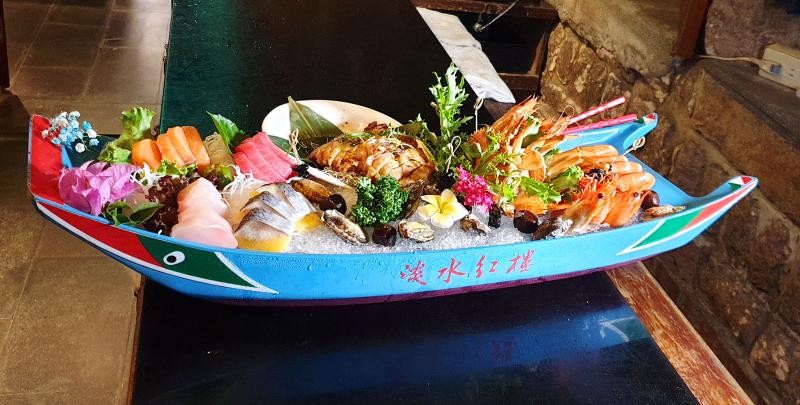
Photo: Katy Hui-wen Hung
On Aug. 23, 1884 war had broken out due to a territorial dispute in Vietnam between the French and Taiwan’s Qing Dynasty overlords.
After capturing Keelung, French warships appeared just outside Tamsui in early morning of Oct. 2 and bombarded the port. The French Fusiliers Marins launched a ground assault on Oct. 8, but defending forces drove out the invaders in just four hours.
The French defeat played a significant role in the Qing’s recognition of the strategic importance of controlling Taiwan and the imperial decision to separate Taiwan from Fujian as its 20th province in 1885.
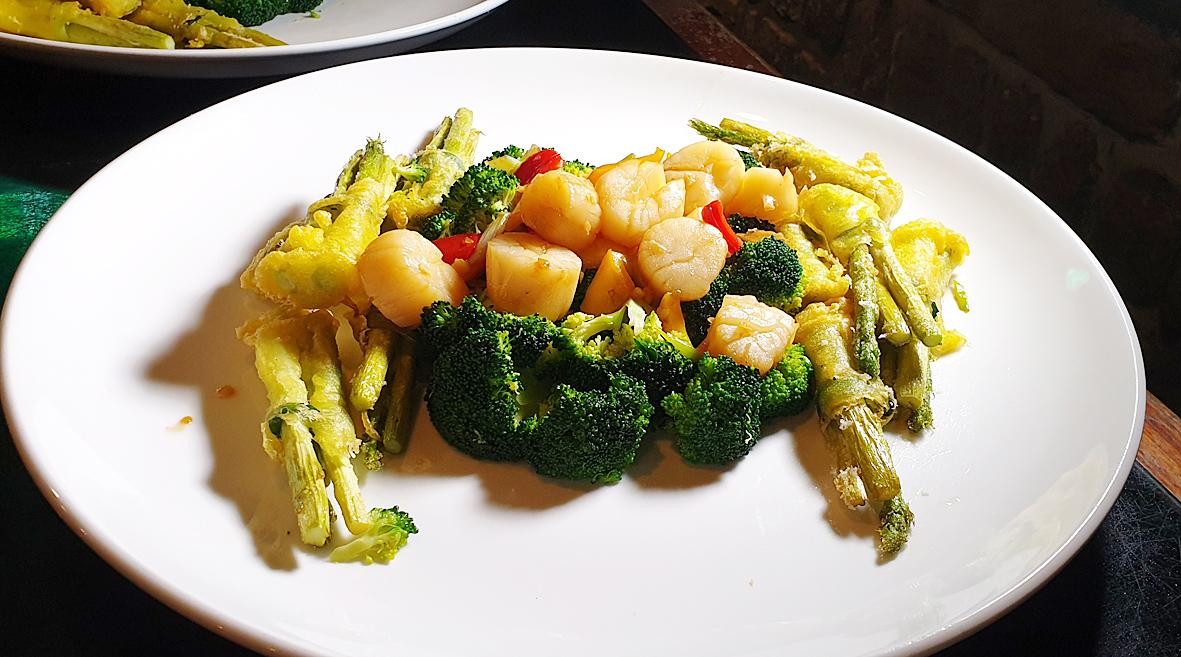
Photo: Katy Hui-wen Hung
Lee’s 10-course menu illustrated significant aspects of the event. In battle storytelling fashion, Lee described each dish before it was served on the tables. However, gastronomic concerns over the order of the dishes took preference over the exact chronology.
Dish 1
“Reveille:” The call to battle begins with a beautifully decorated local seafood boat. The French coveted the port of Tamsui, regarded as a stronghold of maritime trade since the 17th century. Heavily armed, the invaders are represented by a large crab. The Qing, poorly equipped but numerous, are the smaller prawns. And an uninvited Japanese admiral, Heihachiro Togo, watches while eating sashimi on the battlecruiser Amagi. Black beans and iron eggs (a Tamsui specialty) depict planted spies, including a British pilot named Bentley, who went by the Italian name Carozzi.
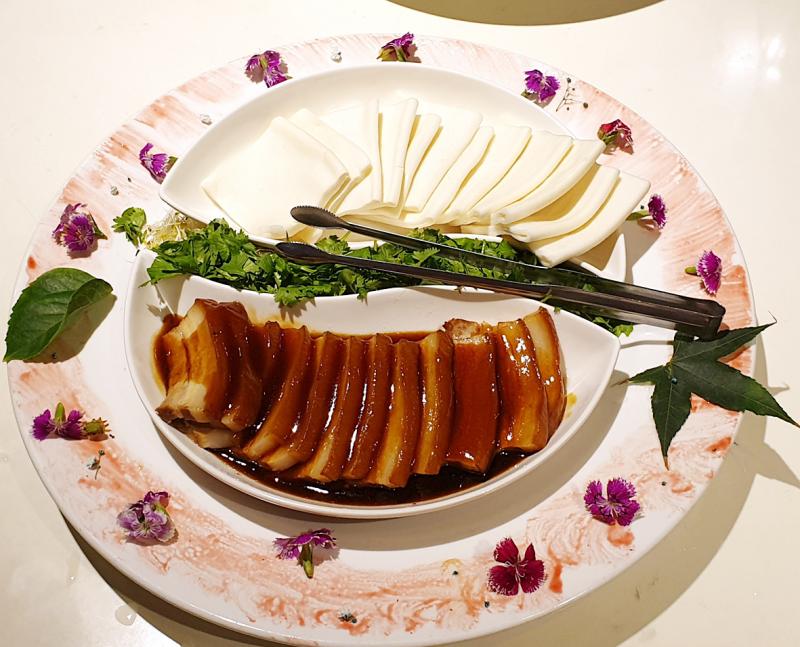
Photo: Katy Hui-wen Hung
Dish 2
“Hobe Coastal Defense:” The local effort to fend off the invaders is presented by a mixed vegetable dish cooked with the popular French ingredients of scallops and asparagus. The asparagus tempura is arranged to resemble the 2km to 3km long fortification that locals built for the Qing army. Broccoli represents the grassy path to the battlefield and peppers the mangroves.
Dish 3
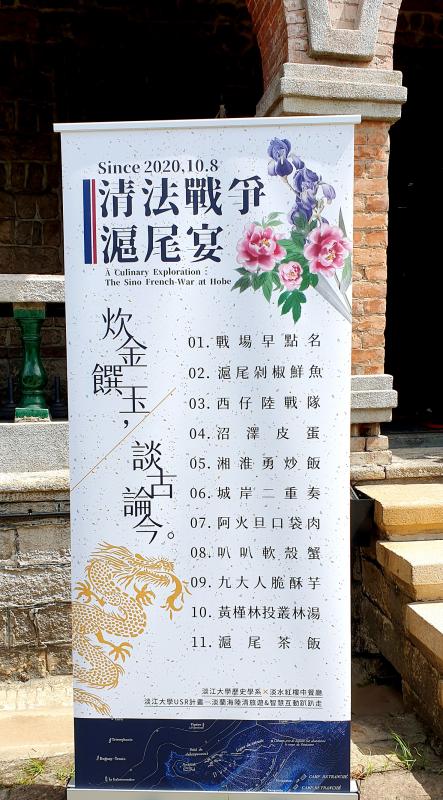
Photo: Katy Hui-wen Hung
“Crossing the Swamp:” This malabar spinach based “thick soup” made with finely chopped preserved eggs, pork, wolfberry and dried fish delivers both flavor and aesthetics. The green soup portrays the intense battlefield and the swampy land covered in paddy fields. Failing to diffuse the Qing’s naval mines, the French made a quick retreat in a boat shown by a flower in a small glass vase in the center of the dish.
Dish 4
“A-ho-da (阿火旦)” pocket meat: Local militia leader Chang Li-cheng (張李成) gathered about 500 Hakka and Aboriginal warriors (who were documented shooting flintlock rifles lying down with the barrel between their toes), pocketing a hard-won victory, hence the braised pork belly in steamed pancake pockets. Chang’s nickname A-ho-da is reportedly an amalgamation of his fiery temperament and his playing of female roles in traditional opera troupes.
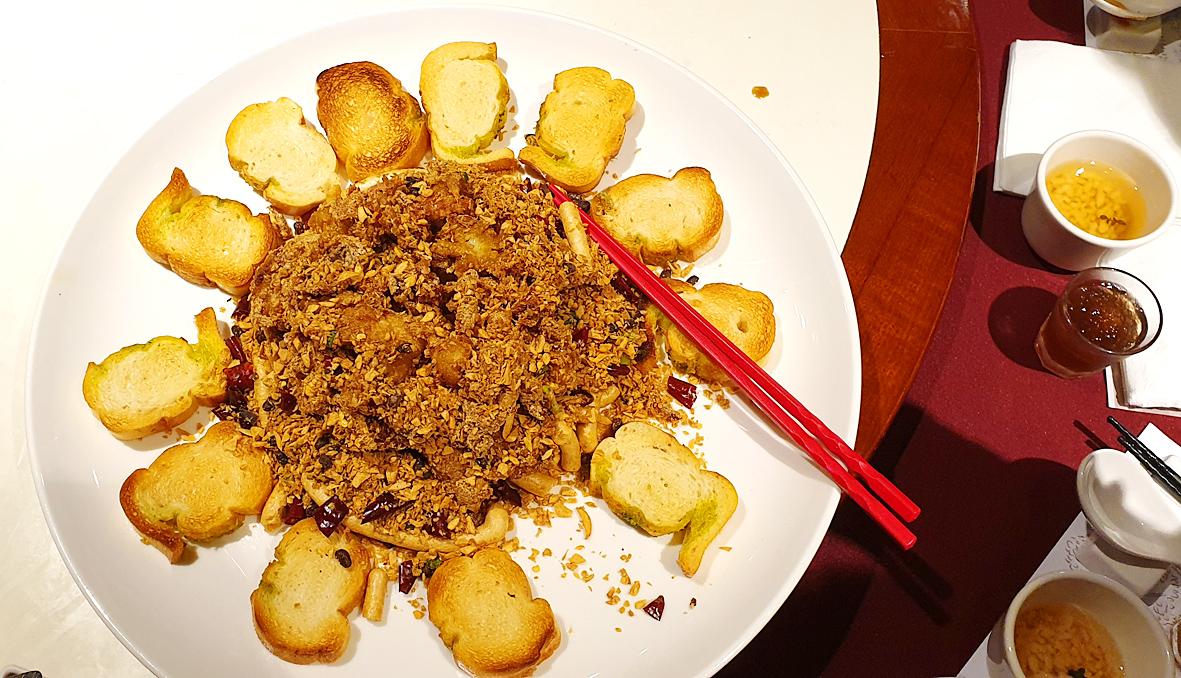
Photo: Katy Hui-wen Hung
Dish 5
“Ba-ba softshell crab:” A heap of fried garlic, ginger and chili surrounded by a circle of toasted bread paints the panicking French encircled by the Qing army. Ba-ba, which approximates the sound of a bugle, refers to the wounded bugler who was unable to deliver the French commander’s orders to ease-up firing and conserve ammunition. The French soldiers’ knees buckled and their legs trembled with fear. Like a softshell crab, they accepted defeat and started to retreat.
Dish 6
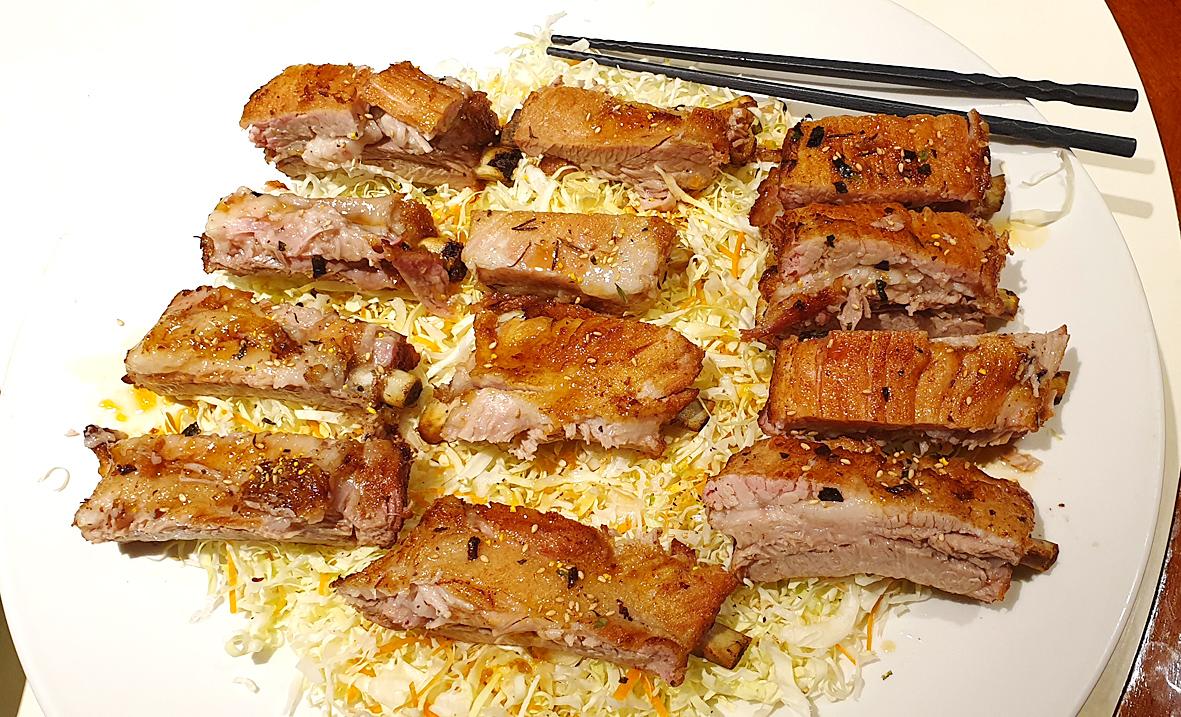
Photo: Katy Hui-wen Hung
Ribs with dijon mustard on cabbage: Upon landing on Shalun Beach (沙崙), the French forces were neatly arranged in lines of 10 squadrons and companies. The ribs are marinated in French mustard and served on shredded cabbage.
Dish 7
Bass with chopped chili: This creation represents the French hopes of catching a fresh fish (Tamsui) only to be taught a bitter lesson, repulsed by the mountains of obstacles (chili) the defenders built.
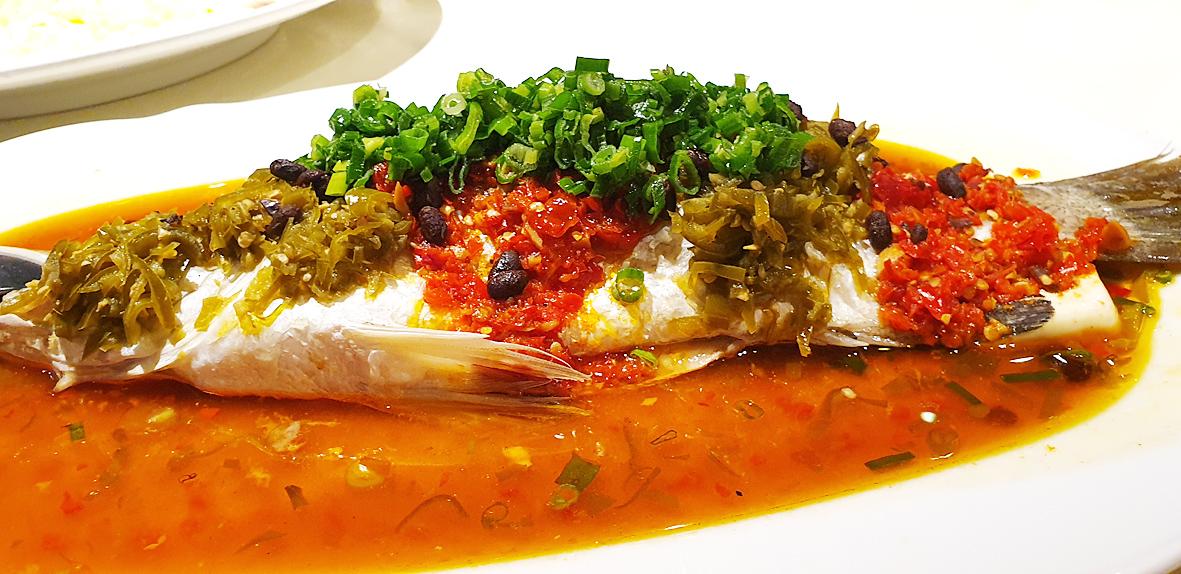
Photo: Katy Hui-wen Hung
Dish 8
“Xiang Army fried rice:” Troops from the Qing’s Xiang (Hunan Province) and Huai (Anhui Province) armies were in charge of defending Taiwan. This tumeric rice dish includes General Tso chicken representing the Xiang and cranberry the Huai, and black sesame the hardy Hunan yong (勇, brave) warriors. It’s said that even the severely wounded yong rushed straight back to the battlefield after being patched up at the local Mackay Clinic, founded by renowned Canadian missionary George Leslie Mackay.
Dish 9
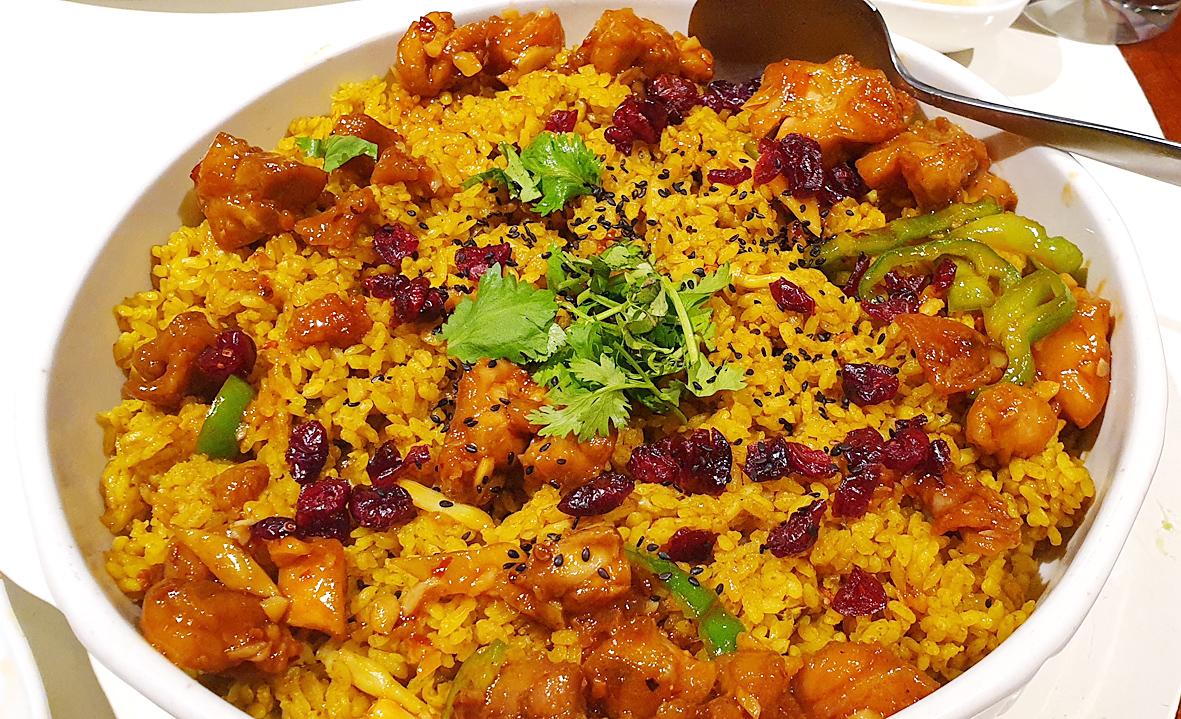
Photo: Katy Hui-wen Hung
“Mangrove soup:” Soon after landing at Shalun Beach, the low growing thorny mangrove bushes and sharp edged screwpines disoriented the French and hindered their advance. These two natural defensive plants form the idea behind the clear soup: Yellow dried daylily and white wood ear fungus represent the screwpine and mangroves, respectively, due to their shapes.
Dish 10
“General’s crispy taro:” The final dish pays tribute to General Sun Kai-hua (孫開華), who led the successful defense of Tamsui. However, Qing imperial commissioner Liu Ming-chuan (劉銘傳), who failed to defend Keelung, tried to steal Sun’s thunder by claiming victory for himself and his faction in official reports, even accusing Sun of dereliction of duty. Taro was reportedly Sun’s favorite food and an important staple in both Tamsui and Sun’s hometown in Hunan. It is served deep-fried, coated in peanut and sesame.
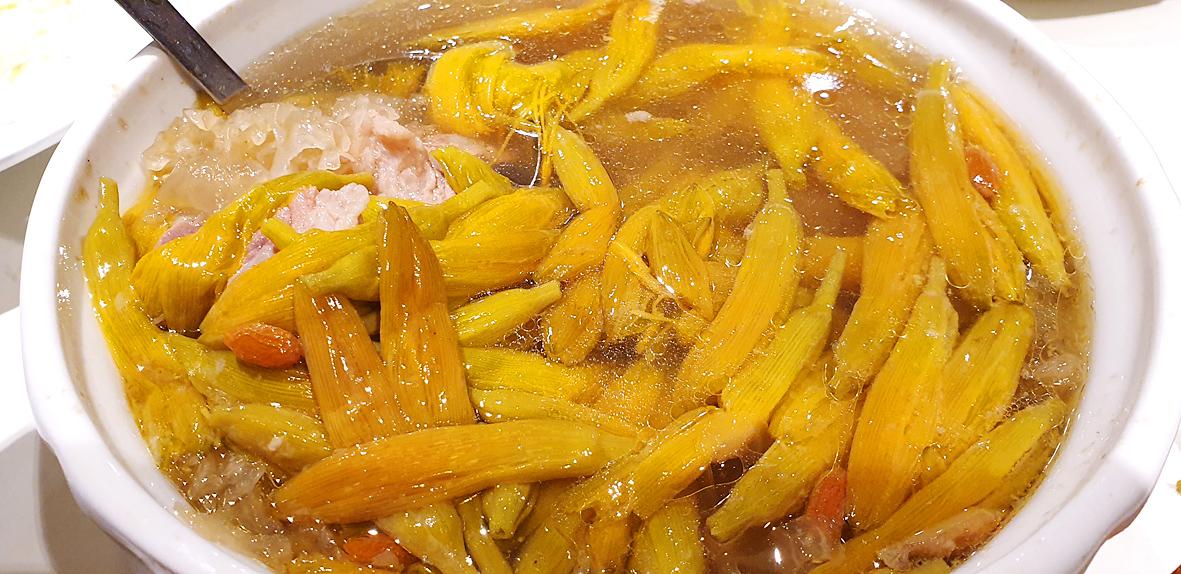
Photo: Katy Hui-wen Hung
TEA INSTEAD OF WINE?
“Hobe tea rice” is a local staple that locals enjoyed in 1884, Lee explains.
It is typically served in a bowl of brown indica rice, which is good for digestion, with tea poured in just before serving.
At the beginning of the banquet, a symbolic tablespoon of polished white rice in a small cup of oolong tea was offered, with tea served throughout the affair.
French gourmands would probably question why wine was not served. The heroic General Sun would too, as he was a known wine lover who was reportedly seen sipping champagne leisurely in the shade of a tree during the French bombardment.

May 11 to May 18 The original Taichung Railway Station was long thought to have been completely razed. Opening on May 15, 1905, the one-story wooden structure soon outgrew its purpose and was replaced in 1917 by a grandiose, Western-style station. During construction on the third-generation station in 2017, workers discovered the service pit for the original station’s locomotive depot. A year later, a small wooden building on site was determined by historians to be the first stationmaster’s office, built around 1908. With these findings, the Taichung Railway Station Cultural Park now boasts that it has

The latest Formosa poll released at the end of last month shows confidence in President William Lai (賴清德) plunged 8.1 percent, while satisfaction with the Lai administration fared worse with a drop of 8.5 percent. Those lacking confidence in Lai jumped by 6 percent and dissatisfaction in his administration spiked up 6.7 percent. Confidence in Lai is still strong at 48.6 percent, compared to 43 percent lacking confidence — but this is his worst result overall since he took office. For the first time, dissatisfaction with his administration surpassed satisfaction, 47.3 to 47.1 percent. Though statistically a tie, for most

In February of this year the Taipei Times reported on the visit of Lienchiang County Commissioner Wang Chung-ming (王忠銘) of the Chinese Nationalist Party (KMT) and a delegation to a lantern festival in Fuzhou’s Mawei District in Fujian Province. “Today, Mawei and Matsu jointly marked the lantern festival,” Wang was quoted as saying, adding that both sides “being of one people,” is a cause for joy. Wang was passing around a common claim of officials of the People’s Republic of China (PRC) and the PRC’s allies and supporters in Taiwan — KMT and the Taiwan People’s Party — and elsewhere: Taiwan and

Six weeks before I embarked on a research mission in Kyoto, I was sitting alone at a bar counter in Melbourne. Next to me, a woman was bragging loudly to a friend: She, too, was heading to Kyoto, I quickly discerned. Except her trip was in four months. And she’d just pulled an all-nighter booking restaurant reservations. As I snooped on the conversation, I broke out in a sweat, panicking because I’d yet to secure a single table. Then I remembered: Eating well in Japan is absolutely not something to lose sleep over. It’s true that the best-known institutions book up faster